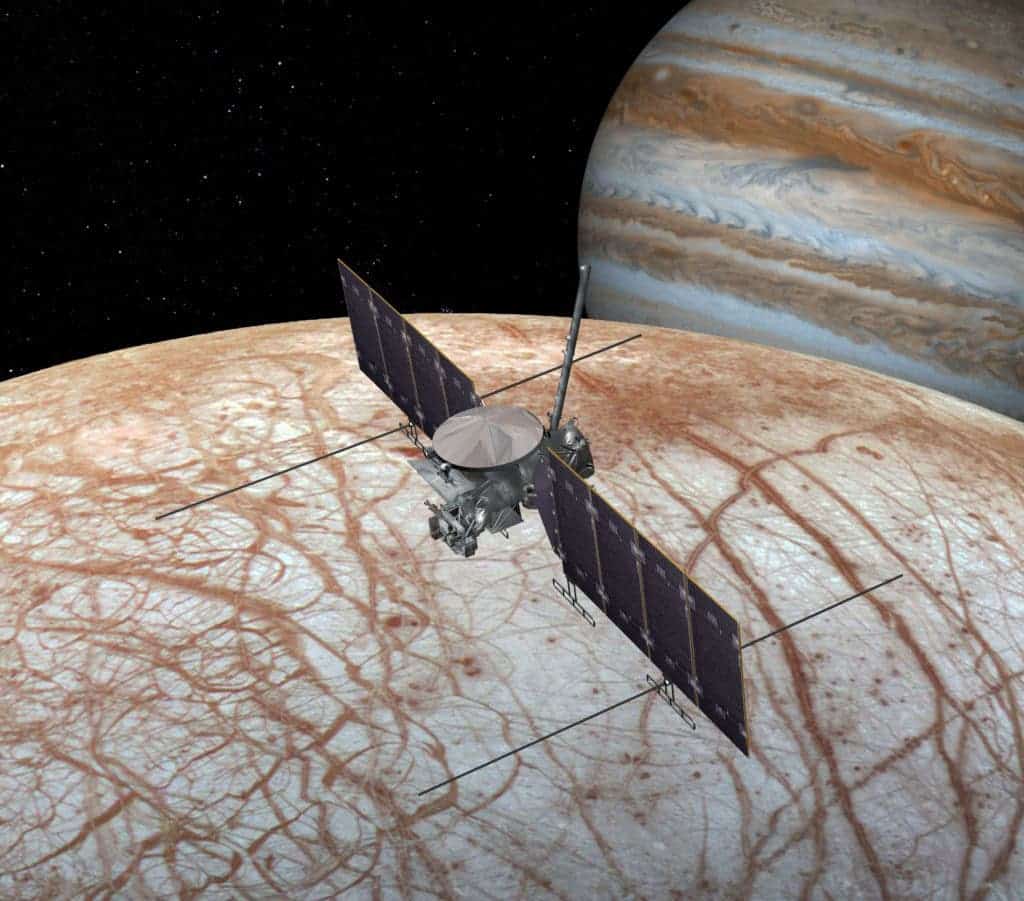The Europa Clipper has passed a crucial step toward its exploration of one of Jupiter’s most interesting moons — Europa. The interplanetary mission has now passed a stage called Key Decision Point C, a rigorous review of a satellite which determines its overall fate.

“We are all excited about the decision that moves the Europa Clipper mission one key step closer to unlocking the mysteries of this ocean world,” said Thomas Zurbuchen, associate administrator for the Science Mission Directorate at NASA Headquarters in Washington. “We are building upon the scientific insights received from the flagship Galileo and Cassini spacecraft and working to advance our understanding of our cosmic origin, and even life elsewhere.”
Europa has long been an interesting destination for researchers. Below its icy shell, believed tens of kilometers thick, the moon is thought to hold a 105 mile (170 kilometer)-deep body of water, which could have the right conditions for life as we currently understand it. It seems unlikely, but this frigid moon might be the most likely place in our solar system to hold extraterrestrial life.
NASA’s spacecraft will perform repeated close flybys of the moon from a long, looping orbit around its host planet. The payload of selected science instruments includes cameras and spectrometers to produce high-resolution images of Europa’s surface and determine its composition. An ice-penetrating radar will determine the thickness of the moon’s icy shell and search for subsurface lakes similar to those beneath Antarctica.
The mission will also carry a magnetometer to measure the strength and direction of the magnetic field, which will allow researchers to assess the depth and salinity of its ocean. A thermal instrument will search the moon’s surface to find surface eruptions of warmer water, while additional equipment will look for evidence of water and tiny particles in the moon’s thin atmosphere.
In 2012, the Hubble Space Telescope observed water vapor above the south polar region of Europa, which provided the first strong evidence of water plumes. If the plumes’ existence is confirmed – and they’re linked to a subsurface ocean – it will help scientists investigate the chemical makeup of Europa’s potentially habitable environment while minimizing the need to drill through layers of ice with future landers.
The Clipper mission will include 45 flybys of the moon at altitudes ranging from 1675 miles to 16 miles (2700 km to 25 km). In addition to Europa, the satellite will also take a voyage past the Jovian moons Ganymede and Callisto, although these will not contain any scientific instruments tailored to Europa.
The first concepts for missions to explore Europa were drawn up in the 1990s, around the time that data from the Galileo spacecraft helped build evidence for a subsurface ocean. However, since that time, many proposals for the moon’s exploration were shot down due to cost considerations and the challenges posed by the space environment around Jupiter, including an ambitious US-European mission along the lines of the Cassini-Huygens mission.
The spacecraft is currently scheduled to launch in 2025.






